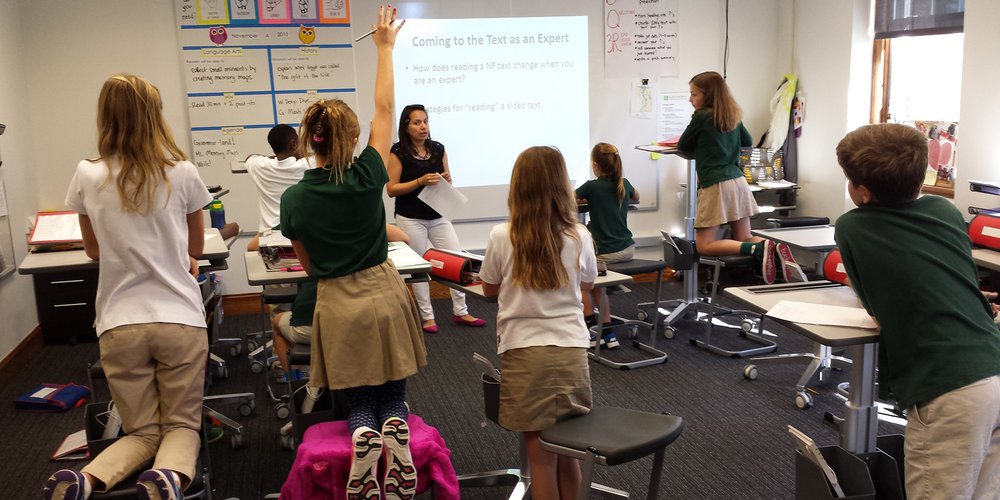The teacher’s role within the learning space is vitally important - few would argue that. However, in a time where technology, new tools and modern teaching methods are shifting instruction within classrooms, teachers are seeing a vital change taking place: the classroom design is becoming a key component of students’ learning. Classrooms are incorporating options that provide students with the ability to create learning micro-ecosystems that best fit their needs and a healthy lifestyle. One way we’re seeing that take shape in the classroom is through the implementation of sit-stand desks.
Standing up for flexible learning environments
Today’s classroom spaces are often designed to incorporate flexibility, collaboration and productivity. The traditional lecture-style teaching approach doesn’t cut it; students seek opportunities to move, work with others, and be comfortable in their learning space. When we were provided the opportunity to implement LearnFit sit-stand desks into the classroom, we initially incorporated them in just one class. As we noticed students gravitating toward the desks more, we decided to spread the desks across five classrooms to allow more students the opportunity to use them.
We’re seeing that the implementation of sit-stand desks allows students to choose how they spend their time in the classroom. While some students gravitate naturally towards standing, others prefer to sit. The more comfortable students are, the more conducive the learning environment becomes.
Students take learning and health into their own hands
By providing students with the opportunity to take ownership of how they physically learn, we’re also recognizing increased engagement, while addressing health concerns surrounding sedentary time during the school day. Students like the mobility of standing desks, as they allow for easier maneuvering around the classroom (no need to drag heavy desks) and collaboration with other students when completing group work.
In addition to improving the everyday classroom dynamic, the desks are helping address the widespread concern that students spend too much time sitting. Recent studies suggest prolonged sitting can result in a number of orthopedic issues for students, ranging from neck problems, lower back pain, carpal tunnel syndrome and more. Increasing low-level activity (such as standing) via options like sit-stand desks has been proven to address these issues, while also increasing circulation, improving metabolism, and maintaining muscle tone. The LearnFits were our choice to ensuring our students can consistently stay active at school while significantly improving the learning environment.
Related Video: Remodeling the Classroom for Personalized Learning
Sustaining Active Classrooms
As education technology continues to rapidly evolve, classroom design is, inevitably, evolving as well. These shifts are helping students and teachers adjust the classroom dynamic to the teaching and learning as it happens. As preferences within the classroom shift - both from the perspective of the teacher and the student - implementing design and new furniture that offers flexibility, allows teachers to easily experiment with new approaches.
While it’s impossible to know the trends of the future, most schools are, unfortunately, just getting out of the factory model of education and embracing flexible learning environments. Investing in desks and other classroom remodel steps, that allow for student motion, engagement and a healthier mindset, is a sustainable measure that is proven to have significant benefits for students.
The redesign of classrooms and schools for digital curriculum was covered in full in the Learning Counsel Special Report on Remodeling for Digital Curriculum.











